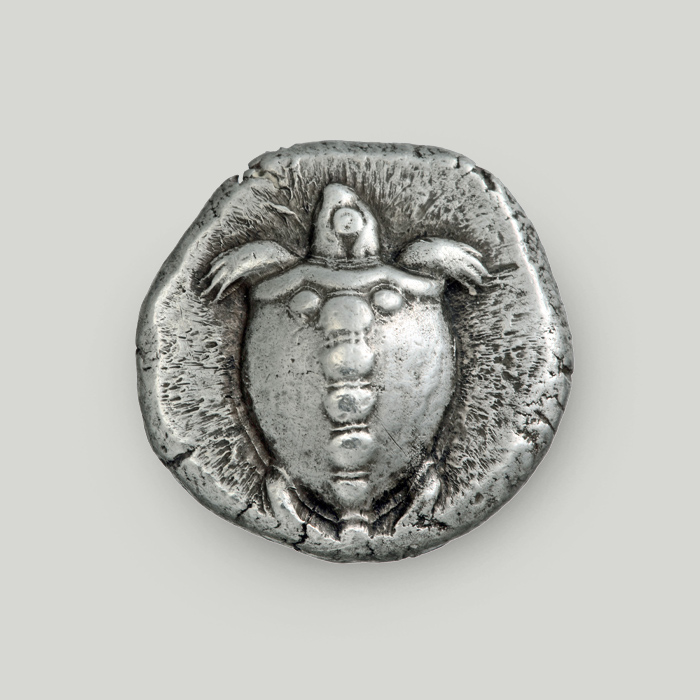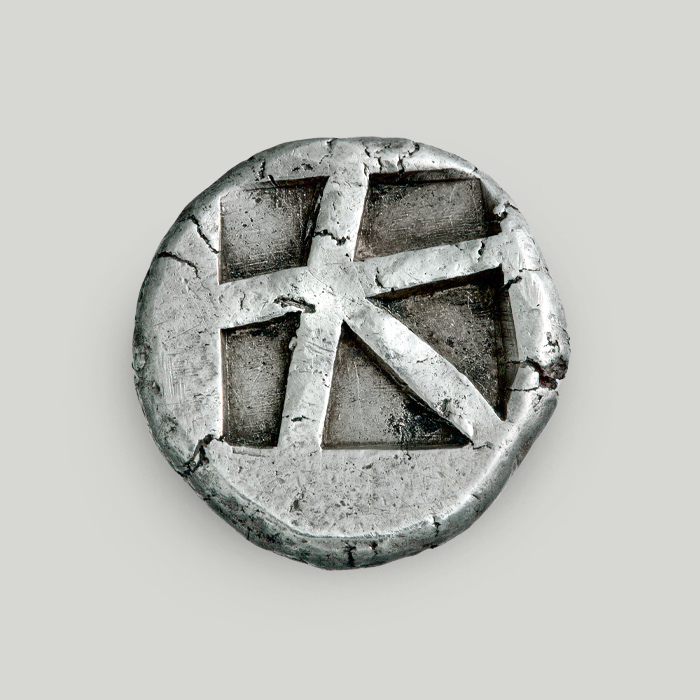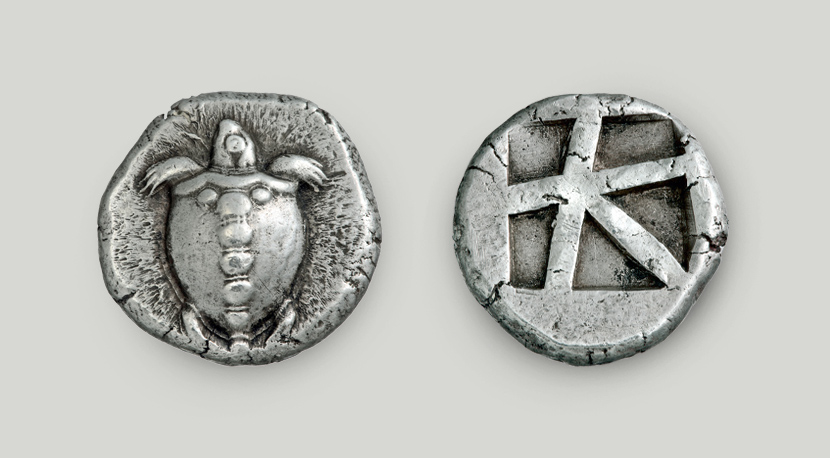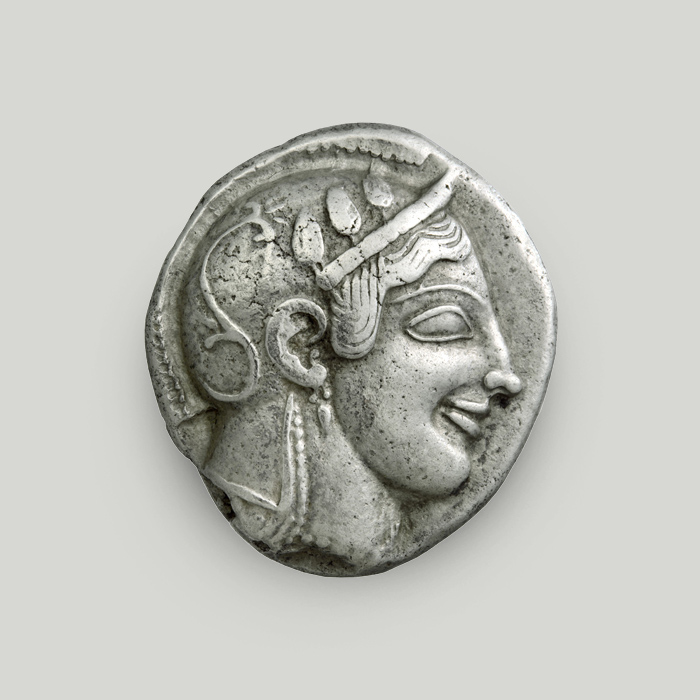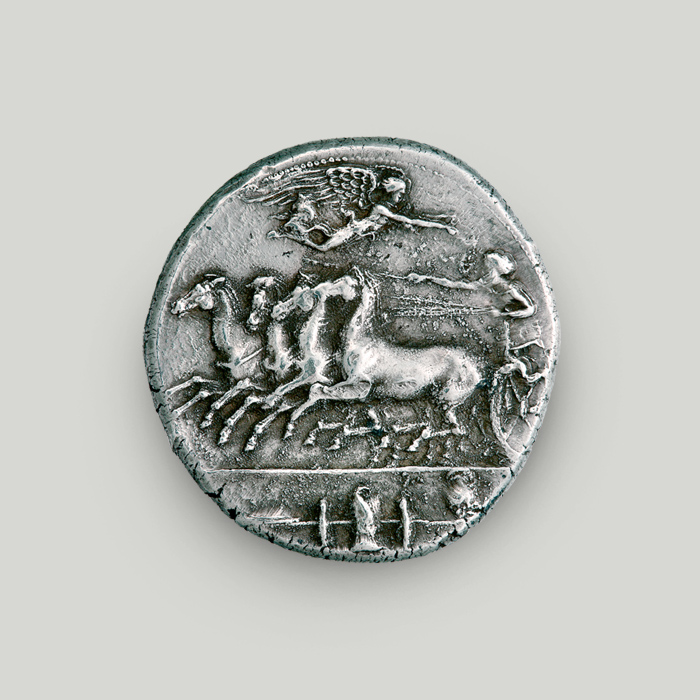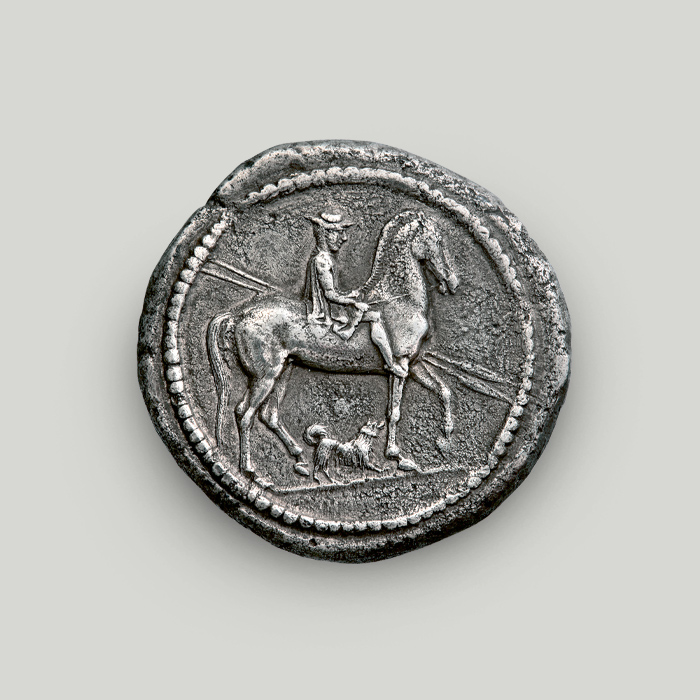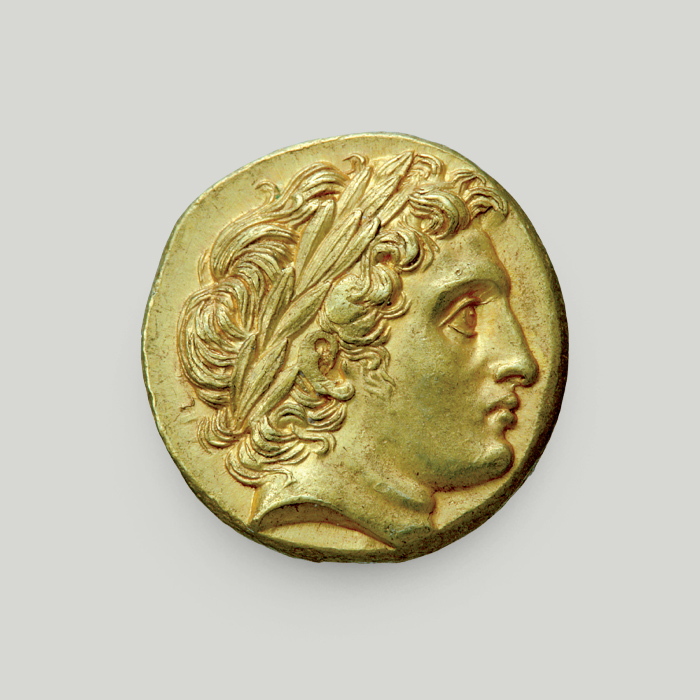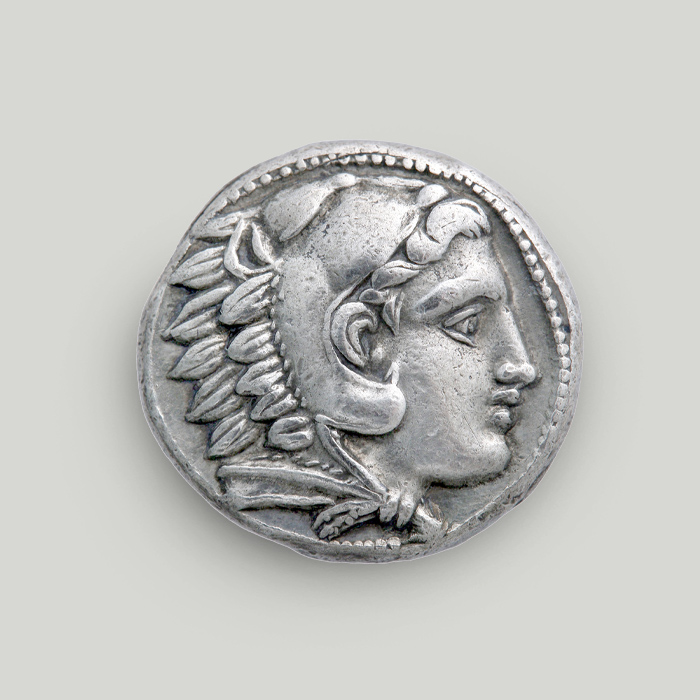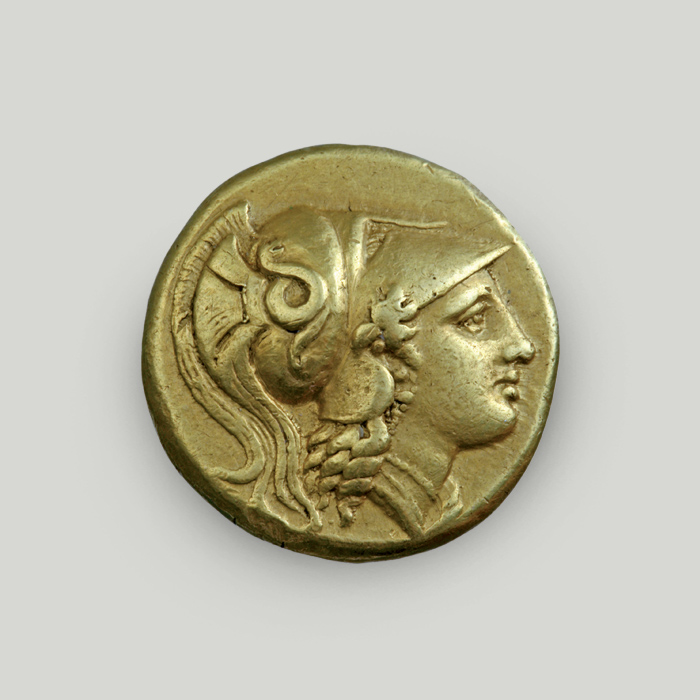Silver stater, Aegina
The silver stater of Aegina was the first silver coin to be used far beyond its area of issue, in the markets of the Mediterranean and the East. Aegina was the first city-state in the Greek world and in Europe to mint its own coins. The incuse square on the reverse of the silver stater is divided into 5 sections and has been the Alpha Bank logo since 1972.
Obverse
Sea turtle. The dots decorating the turtle’s shell are arranged in a Τ-pattern.
Reverse
Incuse square with lines dividing it into 5 sections.
The first coin in the Greek world
Living on a rocky island with not enough land for agriculture, it was not long before the residents of Aegina turned to the sea. Their fleet soon became a power to be reckoned with in Mediterranean trade. They even established colonies, such as Kydonia in Crete and Naucratis in Egypt.
Coins were first used in the regions of Lydia and Ionia, along the western shores of Asia Minor. As the Aeginetans travelled at sea, they became acquainted with this new means of exchange.
Around 560 BCE, Aegina minted its first silver coins. This made it the first city-state in the Greek world and in Europe to mint its own coins.
The first silver coin to circulate widely
Staters from Aegina soon circulated beyond the confines of their city of issue. They reached not only the rest of the Greek world, but also the Mediterranean markets. They even made it into the markets of the East, where Persian coins were standard. In today’s terms, they were the first international silver coins.
In 431 BCE the Athenians conquered the island and deported the population. No more coins were minted until the Aeginetans returned, towards the end of that century.
The role of Aegina in coin minting
The island applied its own weight standard. Each stater weighed 12.4 g.
The Aeginetan standard was considered one of the most significant standards in the ancient world, and had a considerable impact on minting practices.
The turtle as an Aeginetan trademark
Turtles were depicted on staters from the beginning to the end of the Aeginetan minting practice. The sea turtles in the original depictions were later replaced by tortoises.
Already in antiquity, Aeginetan coins were known simply as “turtles”. According to ancient sources: “Some believe the Peloponnesian coins to be called ‘turtles’, on account of the depiction they bear.” (Pollux, IX 74).
The turtle came to be an element of identity, and the city trademark. From the mid-5th century BCE, following the Athenian conquest of Aegina, tortoises replaced sea turtles in the coin types. This change is believed by some to also mark the end of the island’s maritime prowess.
The incuse square on Aeginetan coins
At first, Aeginetan staters were diverse in style, including the design of the incuse square struck on the obverse.
After 470 BCE, the obverse consistently depicted the typical skew pattern. This pattern was standardised in the course of the 5th century BCE, and several symbols were added.
The Alpha Bank logo
The logo used by Alpha Bank since 1972 is based on the Aeginetan silver stater.
Specifically, it was inspired by the obverse of the coin, depicting an incuse square with lines dividing it into 5 sections.
Staters in antiquity
The word “stater” corresponds to an ancient coin denomination. Etymologically, it is derived from the Phoenician schequel, which denoted a coin weighed to comply with a specific standard.
The weight of a stater varied significantly by region, and according to the weight standard applied by the mint.
The weight standard in ancient minting practices
Weight was an important parameter in ancient coins, as their value derived from their metal content. Mints had to apply specific weight standards.
Each weight standard had one main denomination, based on which fractions and higher denominations were calculated. For instance, Athens followed the Attic weight standard (17.4 g tetradrachm), Aegina the Aeginetan standard (12.4 g stater), and Corinth the Corinthian standard (8.6 g stater).
Vast numbers of coins were produced in antiquity. Multiple weight standards existed, which varied by region and period.
This is why identifying the different standards may provide valuable information and help us understand the monetary and economic history of the issuing authority. The use of the various weight standards also indicated the influence exerted by the larger, more affluent cities.
The coin in our publications
The coin is mentioned in the book Coins in the Ancient Greek World by Dr Dimitra Tsangari. This publication follows the history of coins from their invention (late 7th / early 6th century BCE) to the end of the Hellenistic period (2nd century CE). It also includes photos of 38 coins from the Alpha Bank Numismatic Collection.
Buy the publication Coins in the Ancient Greek World on the Alpha Bank e-shop.
The Alpha Bank Numismatic Collection is not open to the public.
Research visits to the Numismatic Collection can be organised upon request.
Contact us to book your visit.
